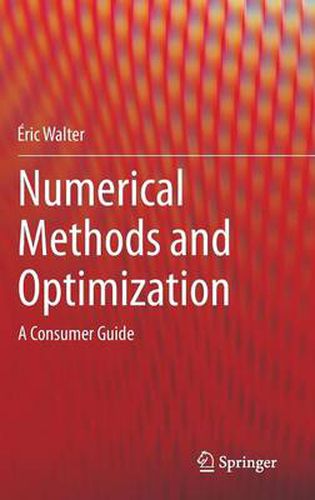Readings Newsletter
Become a Readings Member to make your shopping experience even easier.
Sign in or sign up for free!
You’re not far away from qualifying for FREE standard shipping within Australia
You’ve qualified for FREE standard shipping within Australia
The cart is loading…






This title is printed to order. This book may have been self-published. If so, we cannot guarantee the quality of the content. In the main most books will have gone through the editing process however some may not. We therefore suggest that you be aware of this before ordering this book. If in doubt check either the author or publisher’s details as we are unable to accept any returns unless they are faulty. Please contact us if you have any questions.
Initial training in pure and applied sciences tends to present problem-solving as the process of elaborating explicit closed-form solutions from basic principles, and then using these solutions in numerical applications. This approach is only applicable to very limited classes of problems that are simple enough for such closed-form solutions to exist. Unfortunately, most real-life problems are too complex to be amenable to this type of treatment. Numerical Methods - a Consumer Guide presents methods for dealing with them.
Shifting the paradigm from formal calculus to numerical computation, the text makes it possible for the reader to
*
discover how to escape the dictatorship of those particular cases that are simple enough to receive a closed-form solution, and thus gain the ability to solve complex, real-life problems;
*
understand the principles behind recognized algorithms used in state-of-the-art numerical software;
*
learn the advantages and limitations of these algorithms, to facilitate the choice of which pre-existing bricks to assemble for solving a given problem; and
*
acquire methods that allow a critical assessment of numerical results.
Numerical Methods - a Consumer Guide will be of interest to engineers and researchers who solve problems numerically with computers or supervise people doing so, and to students of both engineering and applied mathematics.
$9.00 standard shipping within Australia
FREE standard shipping within Australia for orders over $100.00
Express & International shipping calculated at checkout
Stock availability can be subject to change without notice. We recommend calling the shop or contacting our online team to check availability of low stock items. Please see our Shopping Online page for more details.
This title is printed to order. This book may have been self-published. If so, we cannot guarantee the quality of the content. In the main most books will have gone through the editing process however some may not. We therefore suggest that you be aware of this before ordering this book. If in doubt check either the author or publisher’s details as we are unable to accept any returns unless they are faulty. Please contact us if you have any questions.
Initial training in pure and applied sciences tends to present problem-solving as the process of elaborating explicit closed-form solutions from basic principles, and then using these solutions in numerical applications. This approach is only applicable to very limited classes of problems that are simple enough for such closed-form solutions to exist. Unfortunately, most real-life problems are too complex to be amenable to this type of treatment. Numerical Methods - a Consumer Guide presents methods for dealing with them.
Shifting the paradigm from formal calculus to numerical computation, the text makes it possible for the reader to
*
discover how to escape the dictatorship of those particular cases that are simple enough to receive a closed-form solution, and thus gain the ability to solve complex, real-life problems;
*
understand the principles behind recognized algorithms used in state-of-the-art numerical software;
*
learn the advantages and limitations of these algorithms, to facilitate the choice of which pre-existing bricks to assemble for solving a given problem; and
*
acquire methods that allow a critical assessment of numerical results.
Numerical Methods - a Consumer Guide will be of interest to engineers and researchers who solve problems numerically with computers or supervise people doing so, and to students of both engineering and applied mathematics.